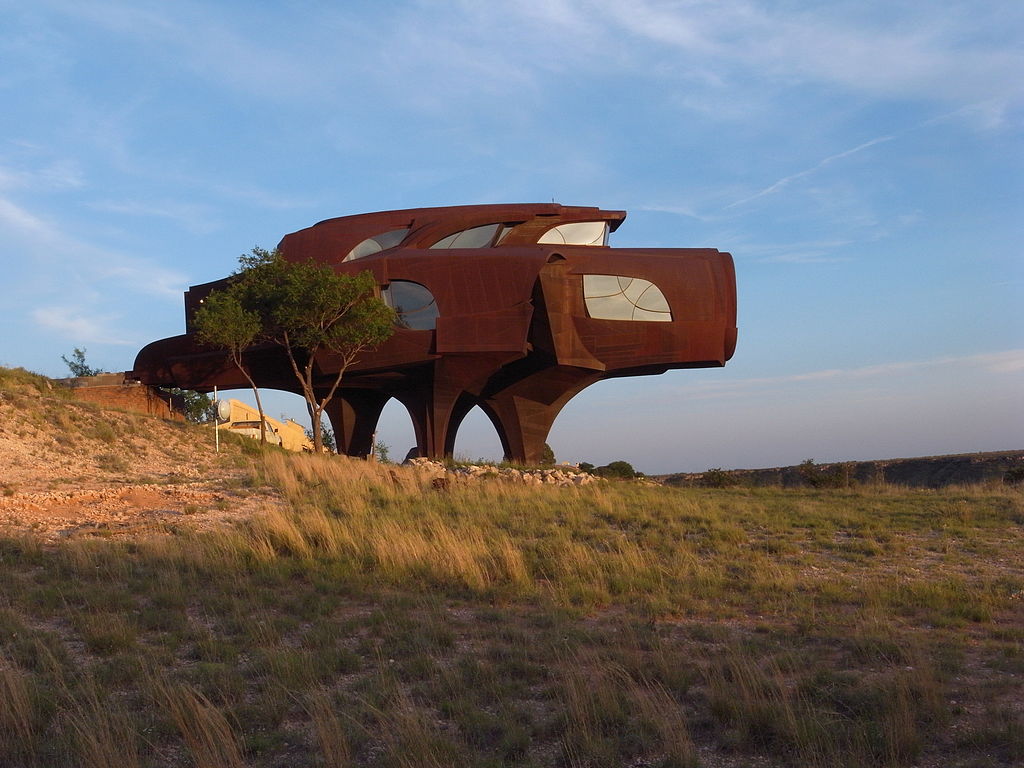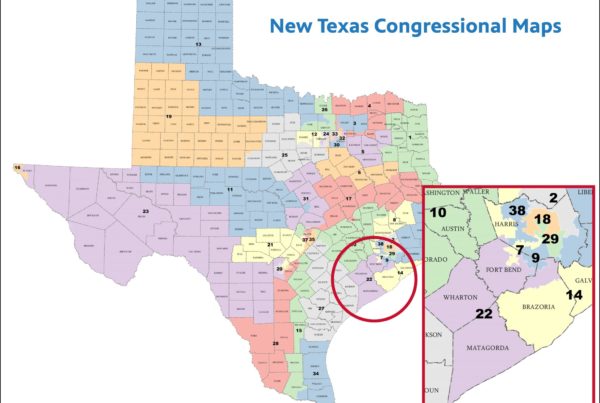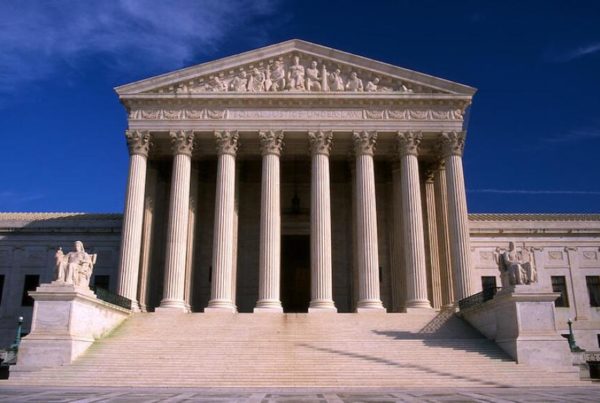On the edge of a canyon in a Lubbock suburb, Robert Bruno’s “Steel House” stands out. It looks a bit like a rusted steel spaceship on four spindly legs. Bruno worked on the house for more than three decades until his death in 2008. The house has sat vacant ever since. Now, it’s up for sale.
Mark Lamster, architecture critic for The Dallas Morning News, spoke to Texas Standard about Bruno’s work, and the home’s future. Listen to the interview in the audio player above or read the transcript below.
This interview has been edited lightly for clarity.
Texas Standard: Can you describe where the house is situated and what it looks like?
Mark Lamster: It’s set up, perched up on a cliffside of a ridge in the Ransom Canyon, which is a sort of suburb of Lubbock. And Ransom Canyon sits around a sort of recreational, man-made lake. And the house has this fabulous view down on this lake. And you approach the house from this curving, suburban-style street with very conventional houses. And then all of a sudden, as you round the curve and reach the apex of this hill that it’s on, you see this extraordinary steel blob of a house, this biomorphic masterpiece sitting there on four spindly legs perched out sticking out over the canyon.
When did Bruno start building this house?
Bruno started work on it in the early ’70s. He, at that time, became a faculty member at Texas Tech in the architecture school. He wasn’t actually an architect; he was there to sort of teach art, and he would also become independently wealthy through his own inventiveness. His wife was interested in environmentalism and had become working at the local water board. And for her, he he invented this sort of valve for irrigation that became wildly popular in Texas and in the Southwest, and the small company that he and his wife made to sell it had become very, very successful. So that gave him the wherewithal to basically just do whatever he wanted, and what he wanted to do was build a house for himself by hand. And that’s what he did. It was really a piece of sculpture that he worked on for 30 years, up right up until his death in 2008.
He only lived in the house for a few months before his death, even though construction wasn’t complete. Do we know anything about those few months?
Bruno only lived in it for the very last months of his life at that point. He had developed cancer, and I think he really just wanted to experience the house while he could at the very end of his life. But it was never really about having a house, per se. The house was always an artistic sculptural project, so it was never completed. Many of the rooms are left incomplete and unfinished. So it really was barely a house even when he was living in it.
Why is this a piece of architecture worth caring about?
First of all, it’s an extraordinary artistic achievement and a work of just immense individuality – great individuality and care and creativity. And it’s unbelievably, it has a unique and really attractive presence to it, and it’s really an icon of its moment. It’s an icon of the area with a long history as a tourist magnet and a magnet for the community.
But it’s also a really important realization of its period in the 1970s and beyond. But it sort of came out of the 1970s, this idea of a biomorphic architecture situated in the West. And I think there’s something incredibly pure and beautiful about about that, and the innocence and inventiveness with which it was created.














